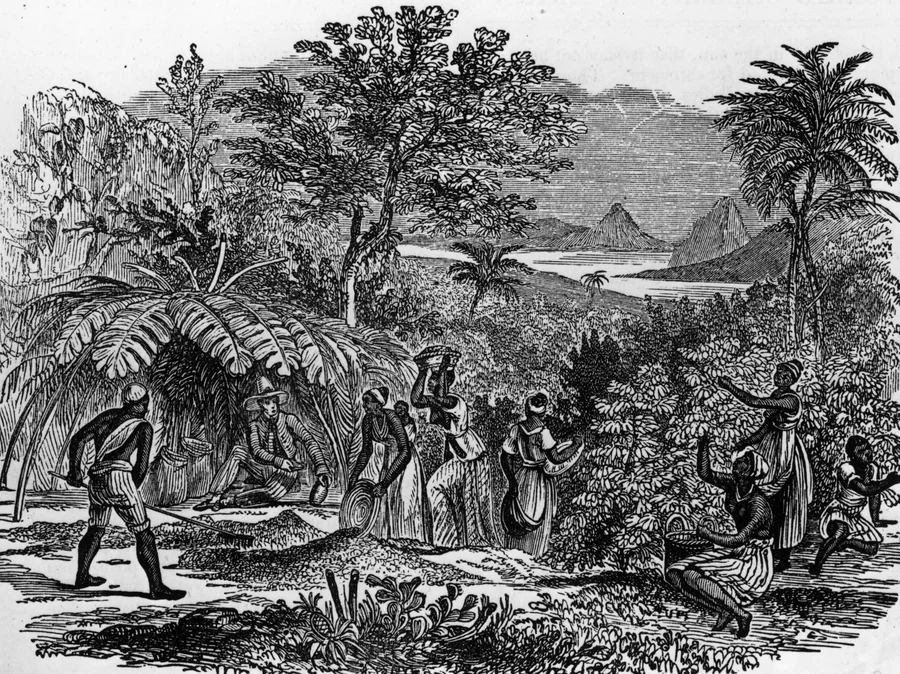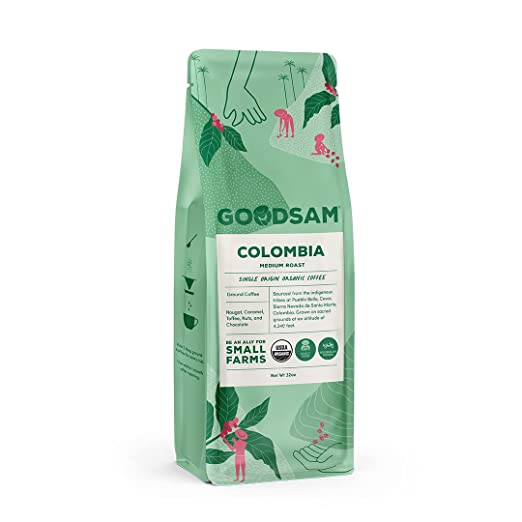Coffee has a long and rich history, dating back to the 15th century. The coffee plant was originally found in Ethiopia, and from there it spread to Arabia, Egypt, and other parts of Africa. Coffee was first introduced to Europe in the 17th century, and quickly became popular in England and France.
By the 18th century, coffeehouses were common in Europe and America, and coffee was an important part of daily life. Today, coffee is one of the most popular beverages in the world, enjoyed by people of all cultures and backgrounds.
Coffee is a brewed drink prepared from roasted coffee beans, which are the seeds of berries from the Coffea plant. The genus Coffea is native to tropical Africa, and Madagascar, Comoros, Mauritius, and Réunion in the Indian Ocean.
The plant was exported from Africa to countries around the world. Coffee plants are now cultivated in over 70 countries, primarily in the equatorial regions of the Americas, Southeast Asia, India, and Africa.
The two most commonly grown are C. arabica and C. robusta. Once ripe, coffee berries are picked, processed, and dried. Dried coffee seeds (referred to as “beans”) are roasted to varying degrees, depending on the desired flavor. Roasted beans are ground and then brewed with near-boiling water to produce the beverage known as coffee.
Coffee is slightly acidic and can have a stimulating effect on humans because of its caffeine content. Coffee is one of the most popular drinks in the world. It is made from the roasted seeds of the coffee plant, which grow in more than 70 countries around the globe.
The coffee plant is a shrub that produces small red or yellow berries called coffee cherries. Coffee is one of the most popular drinks in the world, enjoyed by millions of people every day. But where did coffee come from? How did it become such a popular drink?
In this blog post, we will explore the history of coffee, from its origins in Ethiopia to its spread around the world. We will also discuss some of the different ways coffee is prepared and enjoyed today. So sit back, relax, and enjoy a cup of coffee as you learn about its fascinating history.
The origins of coffee

Hulton Archive/Getty Images
The coffee plant, Coffea arabica, is native to Ethiopia. Arabica coffee was first cultivated on the Arabian Peninsula. The earliest credible evidence of coffee-drinking appears in the middle of the 15th century in Yemen.
It was here that coffee seeds were first roasted and brewed in a similar way to how it is done today. Coffee then spread to Egypt and North Africa. From there it traveled to Italy, then to the rest of Europe, and finally to America and the rest of the world.
By the 16th century, coffee had made its way to Europe. The first European coffee house opened in Venice in 1683. Coffee became increasingly popular in Western Europe, especially among students and scholars.
Coffee was introduced to North America during the Boston Tea Party in 1773 when tea-drinking colonists revolted against a British tax on tea.
Coffee was introduced to the New World by Europeans, and by the mid-18th century, coffee had become an important export crop for several countries. The United States began to import coffee in 1791.
Today, coffee is one of the most popular beverages in the world. It is estimated that more than 500 billion cups of coffee are consumed each year.
How coffee became popular
Coffee has been around for centuries, and its popularity has waxed and waned over time. It was first introduced to Europe in the 17th century, and quickly became a popular drink among the aristocracy.
However, it wasn’t until the 18th century that coffee really took off, becoming a staple drink of the European bourgeoisie.
The reasons for coffee’s sudden popularity are many and varied. The rise of the middle class created a new market for luxury goods like coffee, which had previously been the domain of the wealthy.
At the same time, advances in transportation and communication made it easier to import coffee from producing regions like Africa and Arabia. And as coffeehouses became more prevalent in cities across Europe, they provided an appealing social space for people to gather and chat.
Whatever the reasons for its initial popularity, there’s no doubt that coffee has become one of the world’s most beloved beverages. Today, it is consumed by people of all social classes in nearly every country on earth.
How coffee plants are grown
Coffee plants are generally started from seedlings with coffee seeds, which are then transplanted into larger pots or the ground when they are about a foot tall. Once the coffee plant has reached maturity, it will produce white flowers that yield small, green coffee beans. These beans must be carefully harvested and processed to create the aromatic coffee that we know and love.
Coffee plants are generally grown in tropical regions with ample rainfall and rich, well-drained soils. The coffee plant is a woody perennial that typically grows to a height of 10–15 feet (3.0–4.6 m). It has glossy, green leaves and white flowers with purple streaks. The fruit of the coffee plant, called the coffee cherry, is red when ripe and contains two seeds, which are referred to as coffee beans.
Coffee plants are grown in many countries around the world including Brazil, Colombia, Ethiopia, Guatemala, India, Indonesia, Kenya, Mexico, Peru, Philippines, Tanzania, and Central and South America, Africa, and Southeast Asia.
The coffee plant is a tropical evergreen shrub that can grow to 10 feet tall. Coffee plants need full sun and well-drained soil. Most coffee is grown on large plantations.
Coffee plants need warm temperatures and lots of sunlight to thrive. They are typically grown in areas with altitudes between 3,000 and 6,000 feet. Coffee plants are usually planted in shaded areas when they are young to protect them from the harsh sun and strong winds.
Once the coffee plants mature, they are pruned so that they only have a few main branches. This allows more sunlight to reach the coffee cherries, which helps them ripen evenly.
Coffee plants are grown from seeds, which are planted in seedbeds. The seedlings are then transplanted to the field when they are about a year old.
The coffee cherries take about six to eight weeks to ripen after they are pollinated by bees. Once the cherries turn red or yellow, they are ready to be harvested by hand. After harvesting, the coffee beans are sorted and then cleaned before they are roasted and ground into coffee.
The coffee plant produces white flowers that smell like jasmine. The flowers turn into green berries, which mature into red berries. Each berry contains two coffee beans. The coffee beans are dried and roasted to make coffee.
Coffee plants take about 5 years to mature and produce berries. The coffee berries turn red when they are ripe and are handpicked. After picking, the berries are hulled and the beans are sorted. The beans are then roasted and ground to make coffee.
In order to grow a healthy crop of coffee plants, farmers must provide them with plenty of sun exposure, nutrients, water, and shelter from wind and pests. Coffee plants are relatively low-maintenance crops, but they do require some care and attention in order to produce high-quality beans.
When it comes to watering coffee plants, farmers must be careful not to overwater them as this can lead to problems such as root rot. Coffee plants also need to be fertilized regularly in order to promote growth and yield high-quality beans. Farmers typically use organic compost or manure as fertilizer for their coffee plants.
Pests and diseases can also pose a threat to coffee plants. Some of the most common pests that attack coffee plants include aphids, mites, scale insects, and leaf miners. Diseases that affect coffee plants include rust disease, leaf blight, stem borers, and root rot.
To protect their crops from pests and diseases, farmers often use natural methods such as companion planting or they may apply organic pesticides and herbicides.
Process of harvesting coffee
The coffee harvesting process begins with the picking of the coffee cherries. This is typically done by hand, although some mechanized methods have been developed. The cherries are then sorted by ripeness and color and placed into sacks or bins.
The coffee cherries are then transported to a processing facility where they undergo one of two methods of processing: dry or wet.
The dry method is the older of the two methods and involves spreading the coffee cherries out in the sun to dry for several weeks. The coffee beans are then separated from the dried pulp and any remaining fruit, sorted by size and weight, and stored until they are ready to be shipped.
The wet method is more commonly used today and involves soaking the coffee cherries in water for several hours before putting them through a pulping machine. The pulp is then separated from the beans and both are fermented in tanks for 24-48 hours.
The beans are then washed and dried before being sorted and stored.
The benefits of coffee to the body
When it comes to coffee, there are plenty of benefits that come along with drinking this delicious beverage. For one, coffee can help to improve your mood and give you a boost of energy.
Additionally, coffee has been shown to provide numerous health benefits, including reducing the risk of stroke, Alzheimer’s disease, and Parkinson’s disease. Coffee is also a great source of antioxidants and can help to improve your cardiovascular health.
Coffee has been shown to have numerous health benefits, including improved brain function, decreased risk of death, and lower rates of cancer and heart disease.
Coffee is a rich source of antioxidants, which help protect the body against damage from free radicals. Free radicals are molecules that can cause cell damage, leading to inflammation and disease.
Coffee consumption has been linked with lower rates of death from all causes, including cardiovascular disease, cancer, and Alzheimer’s disease. Coffee drinkers have also been shown to have a lower risk of developing type 2 diabetes.
Coffee consumption has been associated with lower rates of cancer, including breast cancer, colon cancer, and prostate cancer.
So there you have it! The many benefits of coffee to the body. Be sure to drink in moderation though – too much coffee can lead to negative side effects such as anxiety and insomnia.
Here are some Healthy Organic Coffee option to try:
The downside of coffee to the body
While coffee does have some positive effects, such as providing a boost of energy, these negatives should be considered before consuming coffee on a regular basis.
Diuretic: Coffee is a diuretic, which means it causes the body to produce more urine. This can lead to dehydration and an electrolyte imbalance.
Caffeine: Coffee also contains caffeine, which is a stimulant. Stimulants can cause jitters, anxiety, and insomnia.
Acidic: Coffee is also acidic, which can upset the stomach and contribute to heartburn.
Calories: High in calories: Coffee drinks, especially those with added syrups and creamers, can be high in calories. This can contribute to weight gain.
Addiction: Caffeine can be addictive, which means you may need to consume more and more coffee to get the same effect. This can lead to tolerance and withdrawal symptoms when you stop consuming caffeine.
Coffee has been shown to have a number of negative effects on the human body. These include:
- Increased risk of heart disease
- Elevated blood pressure
- Anxiety and irritability
- Insomnia
- Stomach problems
- Irritability
- Increased risk of type 2 diabetes
- Increased risk of some types of cancer
- Impaired fertility
- Anxiety and sleep problems
How to make coffee healthier
If you enjoy drinking coffee but are concerned about the negatives, there are some ways to make it healthier. Try these tips:
- Limit your intake: If you’re concerned about the negatives of coffee, limit your intake to one or two cups per day.
- Choose decaf: If you need to cut back on caffeine, opt for decaf coffee. It has all the antioxidants and other benefits of regular coffee without the caffeine.
- Skip the cream and sugar: Adding cream and sugar to your coffee can add a lot of extra calories. If you want to cut back on calories, skip these additions. You can also try using a natural sugar substitute, such as stevia.
- Choose dark roast: Darker roast coffees have less caffeine than lighter roasts. They also tend to be less acidic, which may be easier on your stomach.
- Make your own: You can control what goes into your coffee when you make it at home. Choose healthy ingredients, such as skim milk and sugar-free syrup.
Conclusion
Coffee has been a part of our lives for centuries and its history is as rich and interesting as the drink itself. From its humble beginnings in Ethiopia to its rise as one of the most popular beverages in the world, coffee has come a long way. And with so many different ways to enjoy it, there’s something for everyone.
So next time you take a sip of your favorite brew, remember the long journey that coffee has taken to get where it is today.





